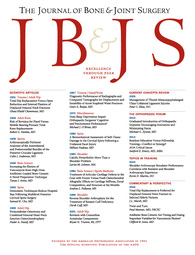
TRAUMA
No benefit of angular stable locking for intramedullary nailing of distal tibial fractures
This report has been verified
by one or more authors of the
original publication.
J Bone Joint Surg Am. 2014 Nov 19;96(22):1889-97.
142 patients who suffered a distal tibial fracture were randomized to undergo intramedullary nailing locked with an angular stable locking system or conventional locking screws. The intent of this study was to determine which locking method achieved earlier full weight-bearing with minimum pain. Follow-up was performed up to 12 months postoperatively. No clinically important differences were observed for time to full weight-bearing with minimum pain or any secondary outcome.
Unlock the full ACE Report
You have access to {0} free articles per month.Click below to unlock and view this {1}
Unlock NowCritical appraisals of the latest, high-impact randomized controlled trials and systematic reviews in orthopaedics
Access to OrthoEvidence podcast content, including collaborations with the Journal of Bone and Joint Surgery, interviews with internationally recognized surgeons, and roundtable discussions on orthopaedic news and topics
Subscription to The Pulse, a twice-weekly evidence-based newsletter designed to help you make better clinical decisions
Exclusive access to original content articles, including in-house systematic reviews, and articles on health research methods and hot orthopaedic topics
Or upgrade today and gain access to all OrthoEvidence content for just $1.99 per week.
Already have an account? Log in


Subscribe to "The Pulse"
Evidence-Based Orthopaedics direct to your inbox.
{0} of {1} free articles
Become an OrthoEvidence Premium Member. Expand your perspective with high-quality evidence.
Upgrade Now













































































